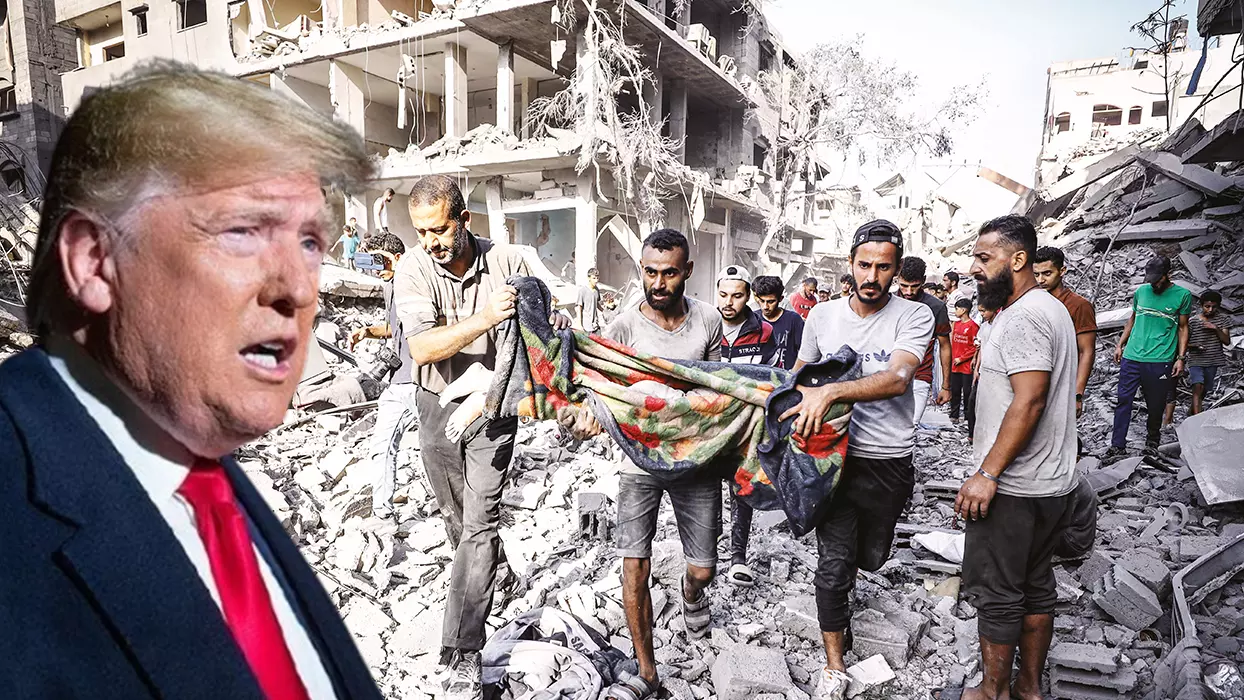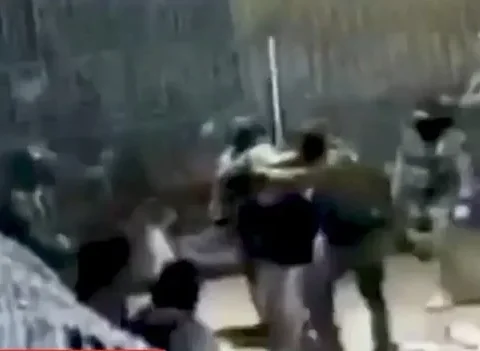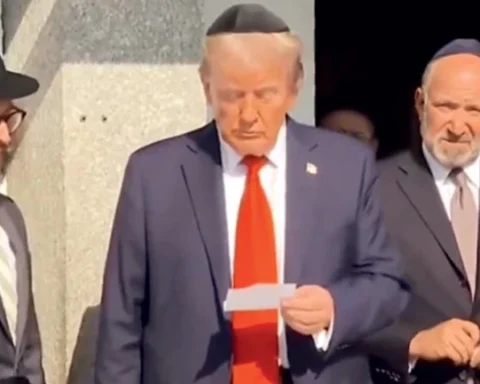Key Point and Summary – President Trump claims a Gaza ceasefire is near, framing it within a push for “lasting peace.”
-His team has leaned on Egypt, Qatar, Turkey, Saudi Arabia, Jordan and the UAE to pressure Hamas and shape postwar reconstruction and governance. The strategy recognizes Hamas’s regional networks and seeks Arab consensus first, unlike past efforts.
-With Iran and its proxies weakened, the White House sees an opening to expand the Abraham Accords and link Gaza stabilisation to wider regional deals.
-Success still hinges on keeping a fragile coalition intact, funding Gaza’s rebuild, and preventing a Hamas return or chaos as fighting pauses.
Trump Bets on Arab Consensus for Gaza Ceasefire
On October 3, President Donald Trump announced that he believed the Gaza war might soon see a ceasefire deal between Israel and Hamas.
“Based on the Statement just issued by Hamas, I believe they are ready for a lasting PEACE,” he wrote on social media.
This was where Trump wanted to be four days after he had held a press conference with Israeli Prime Minister Benjamin Netanyahu. During that meeting, Trump pushed for an end to the war, a policy goal he has set since coming into office ten months ago.
To get to a deal, the White House has worked closely with Arab leaders throughout the Middle East. Trump has also leveraged his warm relationship with Turkey’s President Recep Tayyip Erdogan. Turkey has backed Hamas in the past and hosted Hamas leaders for meetings.
How to Get to Peace in Gaza
The challenge of getting a deal to end the Gaza war has hinged on getting countries that have mediated between Hamas and Israel, or which have hosted Hamas, to get the terrorist group to agree. This is not easy because Hamas is not confined to Gaza.
Unlike some of the Iranian-backed groups that have seen setbacks in conflict with Israel, such as Hezbollah; Hamas has always believed it had an ace in the hole because it could navigate around the Middle East by working with Cairo, Doha and Ankara.
Hamas has felt this freedom to maneuver because it is seen as part of the Palestinian people and because it has roots in the region that are different than other Iranian-backed groups. Hezbollah, for instance, is only backed locally by members of the Shi’ite minority in Lebanon. It isn’t a national movement.
Hamas, by contrast, was founded by backers of the Muslim Brotherhood in the 1980s. It therefore has had a foothold in the Arab world and among some Sunnis who see the Brotherhood positively. It’s harder to isolate Hamas than it is to isolate Hezbollah or the Houthis in Yemen.
Hamas succeeded in the 1990s and 2000s because it was able to thrive so long as countries in the region believed they could work with Hamas to have influence within Palestinian politics. Israel also believed Hamas could be controlled. When Hamas violently took over Gaza in 2007, ejecting the Palestinian Authority, Israel tolerated its role there. It was cemented in control over the years. Doha transferred funds via Israel to Gaza. The funds were ostensibly to pay local salaries and aid people in Gaza. Hamas leaders even moved to Doha in 2012, leaving behind places like Damascus as Syria fell into civil war. This was a win for the group because it left behind the pariah Assad regime for greener pastures in a key Gulf country that was a partner of the US.
Building a Coalition
What Trump’s push for peace has understood is that it is key to get most of the Arab and Muslim countries on board before trying to drive home a deal. This meant lining up support from Egypt, Turkey, Qatar, Saudi Arabia, Jordan, the UAE and other countries.
All these countries want to see an end to war in Gaza. Trump said in his meeting with Netanyahu that the push for peace would address other vital issues, “including Iran, trade, the expansion of the Abraham Accords…But it’s just a part of the bigger picture, which is peace in the Middle East, and let’s call it eternal peace in the Middle East.” When the White House announced that a deal was closer at hand on October 3, the president added that “we are already in discussions on details to be worked out. This is not about Gaza alone, this is about long sought PEACE in the Middle East.”
Can Trump Deliver?
By going all-in on a broader peace push, the Trump administration is seeking to go much further than the previous US administration was able to do in terms of assembling a coalition to end the war. This coalition will matter because the road ahead in Gaza is going to be long. If the deal proceeds, it will require significant investment to rebuild Gaza. It will also require new governance in Gaza so that the area doesn’t return to Hamas rule or fall into chaos.
The countries in the Middle East that are signing on all understand the need not to let chaos and instability grow again in the region. Turkey, Qatar, and Saudi Arabia are all running to invest in Syria to help it rebuild after more than a decade of devastating civil war. Everyone is keenly aware that the civil war in Syria created a power vacuum that enabled ISIS to emerge.
During his press conference in late September with Netanyahu, Trump named several regional leaders. He mentioned Erdogan, the Egyptian President Abdul Fatah al-Sisi, the Emir of Qatar, the Crown Prince of Saudi Arabia, and the Foreign Minister of the UAE. This was important to imply buy-in from all these leaders.
It was built on the meetings Trump held during the United Nations General Assembly.
The Peace White House?
This is part of a larger doctrine that the White House is pursuing in its efforts to portray US policy as promoting peace worldwide. This has included working on deals between Armenia and Azerbaijan, as well as India and Pakistan, among other conflicts.
There are many more challenges, such as ending the war in Ukraine. To achieve the kind of buy-in that appears to be emerging for Gaza, the situation in Ukraine would be more complex because the conflict there is much larger and more complex.
What is unique about the Middle East today is that it is less divided than it has been in decades. Many countries appear to agree on key issues. With the Iranian threat weakened and Iran’s proxies also weakened due to confronting Israel over the last two years, there is a larger consensus emerging.
What the White House has understood is that the only opportunity to end the war in Gaza and end decades of fighting between Israel and Hamas is through consensus in the region.
If countries see a benefit to keeping the war going or think that they can leverage Hamas to get influence, then the war will continue.
If they see the benefits of peace and a win, then they will move forward. Trump’s doctrine has sought to provide this sense of a win for all sides. Keeping this fragile coalition for peace together will be a significant challenge going into next year.
* Seth Frantzman is the author of The October 7 War: Israel’s Battle for Security in Gaza (2024) and an adjunct fellow at The Foundation for Defense of Democracies. He is a Senior Middle East Analyst for The Jerusalem Post. Seth is now a National Security Journal Contributing Editor.
Source: https://nationalsecurityjournal.org/can-trump-bring-peace-to-gaza/






